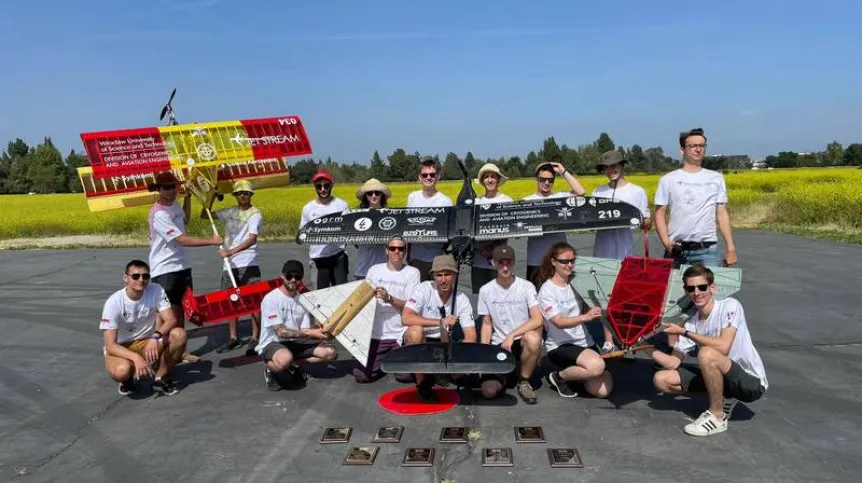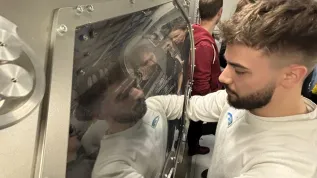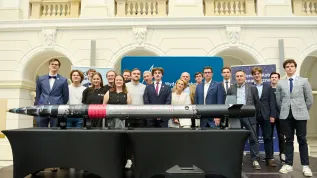
Aircrafts built by Wrocław University of Science and Technology students won in the overall standings in two competition classes of SAE Aero Design West in the US.
Wrocław students from the JetStream Team of the Academic Aviation Club of the Wrocław University of Science and Technology regularly take part in SAE Aero Design West competition in the US, this time after a a two-year break due to the pandemic. The team from Wrocław has been successful in the competition for many years.
This year, JetStream presented three aircraft classes: Micro, Regular and Advanced. 'Each of them has different, very detailed requirements, including the size or weight of the aircraft, and above all the tasks it has to perform', explains Michał Ciepielski from the Wrocław University of Science and Technology press office.
Students from Wrocław won in the overall standings in of Advanced and Micro classes. In the Micro class, the aircraft took off from a short runway and had to carry as much payload as possible and reach ascend to 91 feet as quickly as possible. In the Advanced class, the machine's task was to transport water and rover parts and drop them in specified locations. Then, the students had to put the rover together so that it could transport the water to the designated location, Ciepielski explained.
SAE Aero Design is a series of competitions for young aircraft constructors. Every year, SAE International organizes three editions: West, East and Brazil. The competition sponsors are the aviation industry giants, including Lockheed Martin, Siemens and Solidworks.
PAP - Science in Poland, Piotr Doczekalski
pdo/ agt/ kap/
tr. RL













